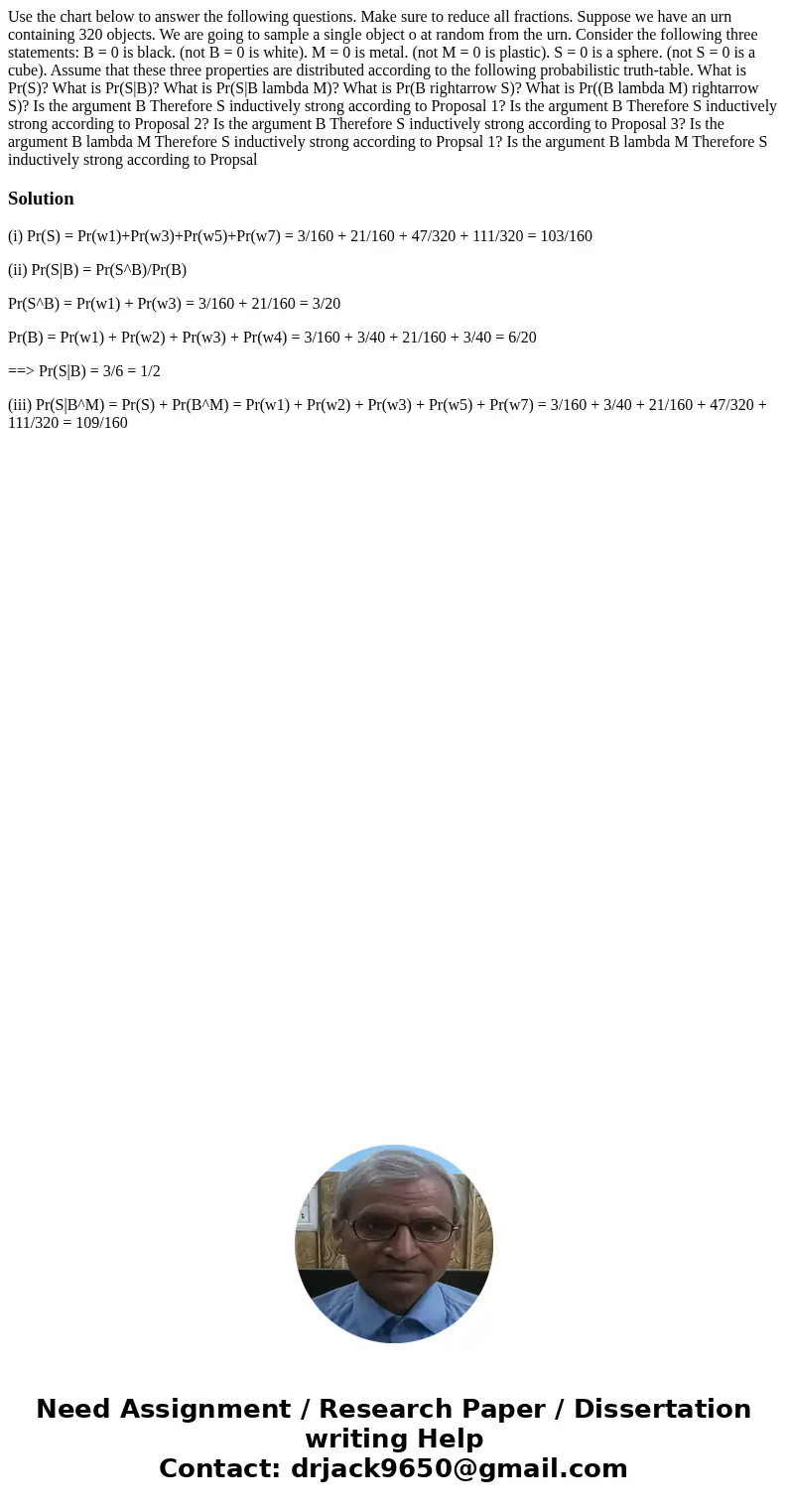Use the chart below to answer the following questions Make s
Use the chart below to answer the following questions. Make sure to reduce all fractions. Suppose we have an urn containing 320 objects. We are going to sample a single object o at random from the urn. Consider the following three statements: B = 0 is black. (not B = 0 is white). M = 0 is metal. (not M = 0 is plastic). S = 0 is a sphere. (not S = 0 is a cube). Assume that these three properties are distributed according to the following probabilistic truth-table. What is Pr(S)? What is Pr(S|B)? What is Pr(S|B lambda M)? What is Pr(B rightarrow S)? What is Pr((B lambda M) rightarrow S)? Is the argument B Therefore S inductively strong according to Proposal 1? Is the argument B Therefore S inductively strong according to Proposal 2? Is the argument B Therefore S inductively strong according to Proposal 3? Is the argument B lambda M Therefore S inductively strong according to Propsal 1? Is the argument B lambda M Therefore S inductively strong according to Propsal
Solution
(i) Pr(S) = Pr(w1)+Pr(w3)+Pr(w5)+Pr(w7) = 3/160 + 21/160 + 47/320 + 111/320 = 103/160
(ii) Pr(S|B) = Pr(S^B)/Pr(B)
Pr(S^B) = Pr(w1) + Pr(w3) = 3/160 + 21/160 = 3/20
Pr(B) = Pr(w1) + Pr(w2) + Pr(w3) + Pr(w4) = 3/160 + 3/40 + 21/160 + 3/40 = 6/20
==> Pr(S|B) = 3/6 = 1/2
(iii) Pr(S|B^M) = Pr(S) + Pr(B^M) = Pr(w1) + Pr(w2) + Pr(w3) + Pr(w5) + Pr(w7) = 3/160 + 3/40 + 21/160 + 47/320 + 111/320 = 109/160

 Homework Sourse
Homework Sourse